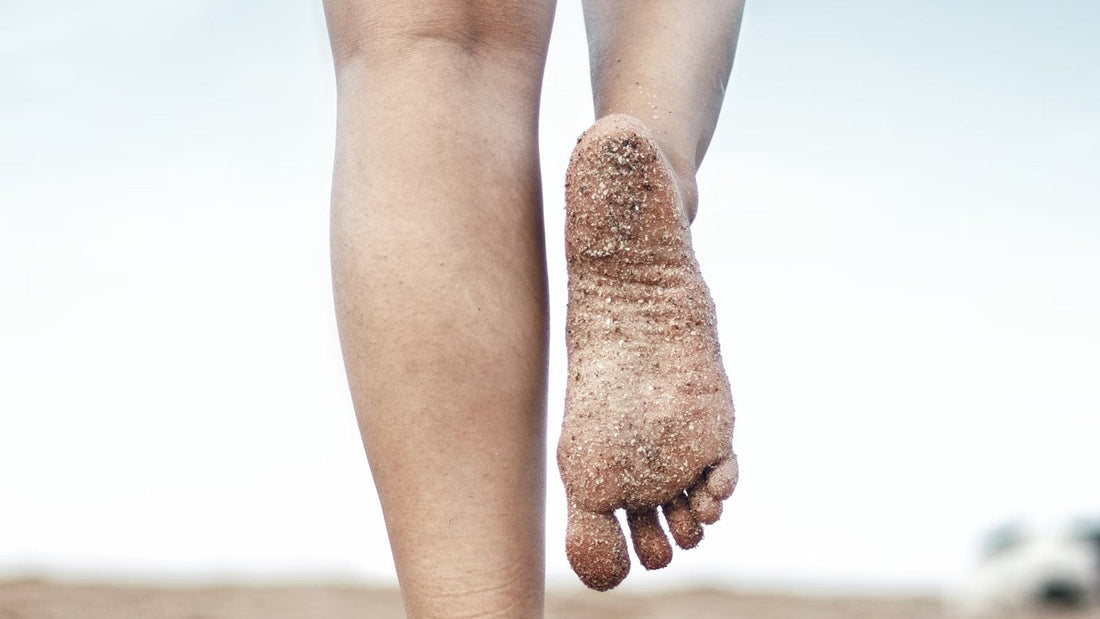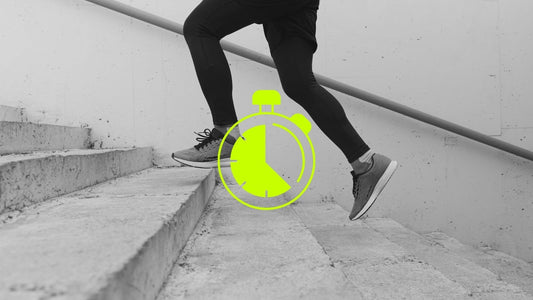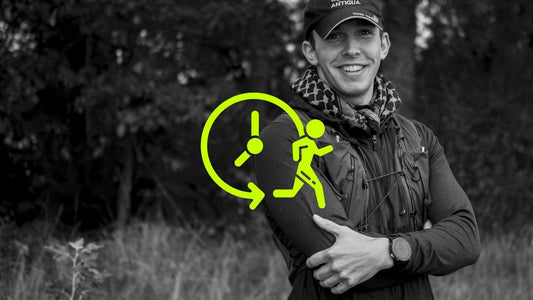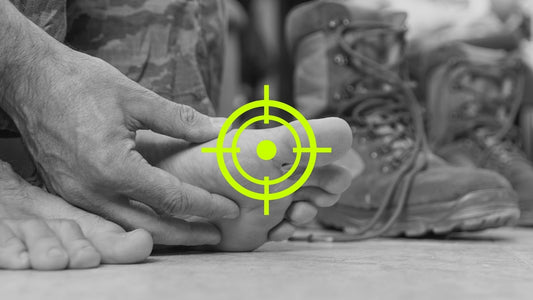If you’ve ever faced the itchy, burning annoyance of Athlete’s foot, we get it; it’s like your feet are staging an angry protest mid-workout. While we often think of Athlete’s foot as a between-the-toes issue, can this fungal freeloader find its way to your heel? Spoiler alert: Yes, it can. And if you’ve ever felt that tell-tale sting, you know it’s about as welcome as a treadmill malfunction mid-sprint.
But don’t worry - we’ve got the lowdown on why this happens, how to get rid of it, and how to keep your feet healthy, happy, and fungus-free.
Sit back and put up those cracked heels, but pay attention!
What Exactly Is Athlete’s Foot?
Athlete’s foot, or tinea pedis, is a fungal infection caused by dermatophytes. These persistent little fungi thrive in warm, moist environments (read: sweaty gym shoes, communal shower floors, or that yoga mat you swear you wiped down). More tenacious than Gandhi, Athletes' foot is capable of surviving for months or even YEARS on surfaces, just waiting for an unsuspecting foot. All it needs is a warm, sweaty environment and a tiny break in the skin.
So yes—even if you’re disciplined, dedicated, and have the most elite sock drawer known to mankind, you’re still at risk if your feet get damp and stay that way.
Typically, it attacks the spaces between your toes, but don’t be fooled. Athlete’s foot is perfectly capable of targeting other areas of your foot, including your nails, sole, sides of your foot and heel.
Wait… Athlete’s Foot on the Heel? Really?
Yep, Athlete’s foot doesn’t just lurk between your toes, although that’s its prime real estate. Athlete’s foot thrives in spaces where it can stay warm and damp, but if conditions are right, those same fungi can make their way onto your heels.
There’s a specific type called "moccasin athlete’s foot" that loves dry, scaly skin on the bottom and edges of your feet. It causes redness, flakiness, and sometimes painful cracking. So if your heel’s looking more lizard-than-human lately, this could be the cause.
How Do You Know It’s Athlete’s Foot for sure?
- Dry, flaking skin: This might just look like dry skin at first, but it usually comes with other symptoms
- Cracked and splitting skin: Moccasin-type athlete’s foot can make your heels feel dry, cracked and painfully sore
- Itching, burning, or stinging: This can happen especially after a sweaty workout or even a shower
- Redness and inflammation: This fungal infection often brings a rash, making your heel look flushed or irritated.
If this sounds familiar, don’t worry. With the right care, you can get your feet back to their best and squash this fungal freeloader.
What to Do If You Suspect Athlete’s Foot on Your Heel
Athlete’s foot is highly treatable, but don’t just think “I’ll get to it later” - the sooner you get to it, the better and the less likely it’ll spread.
1. Reach for the Right Treatment
It might be tempting to go nuclear on your Athlete’s foot by dousing it in chemicals, but if you’re conscious about what you use on your body’s largest organ, the skin, this probably doesn’t appeal. Some fungus has even become resistant to modern antifungal treatments.
Luckily natural ingredients can murder fungus just as well, and have been doing for centuries. Our own athlete's foot powder attacks fungi quicker than Gassiev knocking out Shimmell - your Athlete’s foot won’t know what hit it. Fungal Shield is:
- Packed with proven natural antifungal agents
- Free from synthetic chemicals and nasties
- Free from pointless fillers
- Tough on fungi but kind to your skin
It also helps dry out moisture, kill off the fungal party happening on your foot, and get back to training with confidence.
2. Keep It Dry
Fungi HATE dry environments, so make your heels as inhospitable as possible. Wash your feet every day and after workouts with warm water and soap then dry them carefully, including between your toes and around your heels.
If you’re also dealing with cracked heels, reach for our Sole Saviour, a natural, chemical, and filler-free cream designed to nourish and repair dry, damaged skin.
3. Keep it clean
Change your socks daily - or more often if you’re sweating buckets. (No judgment, you’re working hard.)
Wash your feet with warm, soapy water after a workout, then thoroughly dry them before changing your socks.
Wash socks on a hot wash and whenever possible, leave them line-dry inside out in the sun. Fungi are like vampires; they hate the sun.
Pro tip: Leave your trainers in a sunny spot with the soles removed and laid next to them.
4. Practice Good Foot Hygiene
Wear breathable, moisture-wicking socks and rotate your shoes giving them time to air out.
Skip buying used gym trainers, even if Vinted is life, you might not be getting the bargain you think!
5. Avoid Reinfection
Athlete’s foot is stubborn and quite the opportunist. Keep doing all of the above to avoid reinfection, plus:
Don’t walk around barefoot in communal spaces.
Moisturise with the right product. Not just any lotion—use something designed for feet like Sole Saviour so you don’t trap moisture and create a fungal playground.
5. Know When to Seek Backup
If the infection doesn’t get better after a few weeks of treatment or worsens, it’s time to consult a healthcare professional. Sometimes, Athlete’s foot needs prescription-level intervention.
Final Thought: You can’t outrun athlete’s foot, but you can outsmart it
Athlete’s foot on the heel is annoying, but it’s not unbeatable. With natural care, good hygiene, and our Funga Shield + Sole Saviour duo, you can get back to focusing on what really matters—crushing your workouts without itchy distractions.
Your feet do a lot for you, so make sure you return the favour. Keep your heels crack-free, your socks dry, and your confidence high!
Now, excuse us while we go check our gym bag for suspiciously damp socks… 👀





